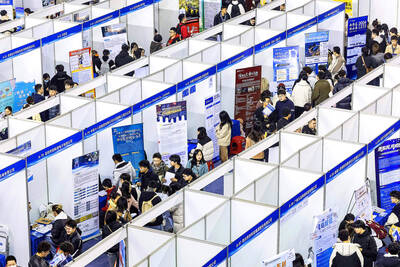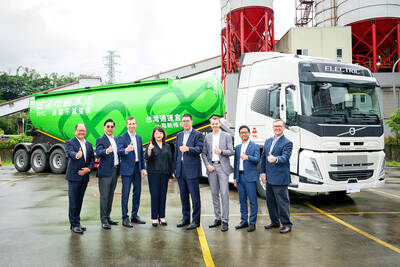China Development Financial Holding Corp (中華開發金控) plans to acquire more of China Life Insurance Co (中國人壽) via a public tender of NT$23.6 per share, which would boost its stake in the life insurer to 55.95 percent, it said yesterday.
The company would conduct the public tender for a further 21.13 percent stake upon approval from the Financial Supervisory Commission (FSC), China Development Financial spokesman Richard Chang (張立荃) told a news conference in Taipei.
The maximum number of shares to be acquired in the offer would be 1 billion, or 21.13 percent of China Life’s issued shares, with the minimum set at 236.57 million shares, or 5 percent, Chang said.
PREMIUM
The per-share offer price would represent a premium of 17.2 percent compared with China Life’s average closing price of NT$20.14 over the past 20 days, he said, adding that the offer was based on an assessment by PricewaterhouseCoopers Taiwan.
Asked if the retail shareholders of China Life would be willing to sell their shares given that in 2017 China Development Financial acquired a 25 percent stake in China Life at NT$35 per share, he said that the premium was 17 percent last time.
The announcement was unexpected, as the FSC has ordered China Development Financial to fully acquire the insurer before the tenures of China Life’s board members expire on June 13, 2022.
TIMING
“We think it is a good time now,” Chang said.
With another 21.13 percent stake after this transaction, China Development Financial could easily take control of the insurer, he said.
China Development Financial would use NT$10 billion (US$347.09 million) raised from its corporate bonds, NT$3 billion of capital from its two units, CDIB Capital Group (中華開發資本) and KGI Securities Ltd (凱基證券), and other funds it has to make the acquisition, Chang said.
LEVERAGE
The company’s leverage ratio would remain stable, Chang said.
When the company would purchase another shares in China Life has not been decided, but it is still CDFHC’s goal to fully acquire China Life, he said.

Stephen Garrett, a 27-year-old graduate student, always thought he would study in China, but first the country’s restrictive COVID-19 policies made it nearly impossible and now he has other concerns. The cost is one deterrent, but Garrett is more worried about restrictions on academic freedom and the personal risk of being stranded in China. He is not alone. Only about 700 American students are studying at Chinese universities, down from a peak of nearly 25,000 a decade ago, while there are nearly 300,000 Chinese students at US schools. Some young Americans are discouraged from investing their time in China by what they see

Taiwan Transport and Storage Corp (TTS, 台灣通運倉儲) yesterday unveiled its first electric tractor unit — manufactured by Volvo Trucks — in a ceremony in Taipei, and said the unit would soon be used to transport cement produced by Taiwan Cement Corp (TCC, 台灣水泥). Both TTS and TCC belong to TCC International Holdings Ltd (台泥國際集團). With the electric tractor unit, the Taipei-based cement firm would become the first in Taiwan to use electric vehicles to transport construction materials. TTS chairman Koo Kung-yi (辜公怡), Volvo Trucks vice president of sales and marketing Johan Selven, TCC president Roman Cheng (程耀輝) and Taikoo Motors Group

MAJOR DROP: CEO Tim Cook, who is visiting Hanoi, pledged the firm was committed to Vietnam after its smartphone shipments declined 9.6% annually in the first quarter Apple Inc yesterday said it would increase spending on suppliers in Vietnam, a key production hub, as CEO Tim Cook arrived in the country for a two-day visit. The iPhone maker announced the news in a statement on its Web site, but gave no details of how much it would spend or where the money would go. Cook is expected to meet programmers, content creators and students during his visit, online newspaper VnExpress reported. The visit comes as US President Joe Biden’s administration seeks to ramp up Vietnam’s role in the global tech supply chain to reduce the US’ dependence on China. Images on

New apartments in Taiwan’s major cities are getting smaller, while old apartments are increasingly occupied by older people, many of whom live alone, government data showed. The phenomenon has to do with sharpening unaffordable property prices and an aging population, property brokers said. Apartments with one bedroom that are two years old or older have gained a noticeable presence in the nation’s six special municipalities as well as Hsinchu county and city in the past five years, Evertrust Rehouse Co (永慶房產集團) found, citing data from the government’s real-price transaction platform. In Taipei, apartments with one bedroom accounted for 19 percent of deals last